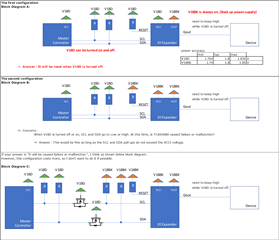Hi. I have a related question.
While the main control computer, and its I2C bus and accompanying power supply for the VCCI pin is powered down, the TCA6408A output port needs to remain high.
If \RESET pin is pull to VCCP (not pull to VCCI), will the output port register setting be maintained and output port remains high even if the VCCI power is lost?
I look forward to hearing from you soon.Thank you.
Best regards,
Hiroaki




